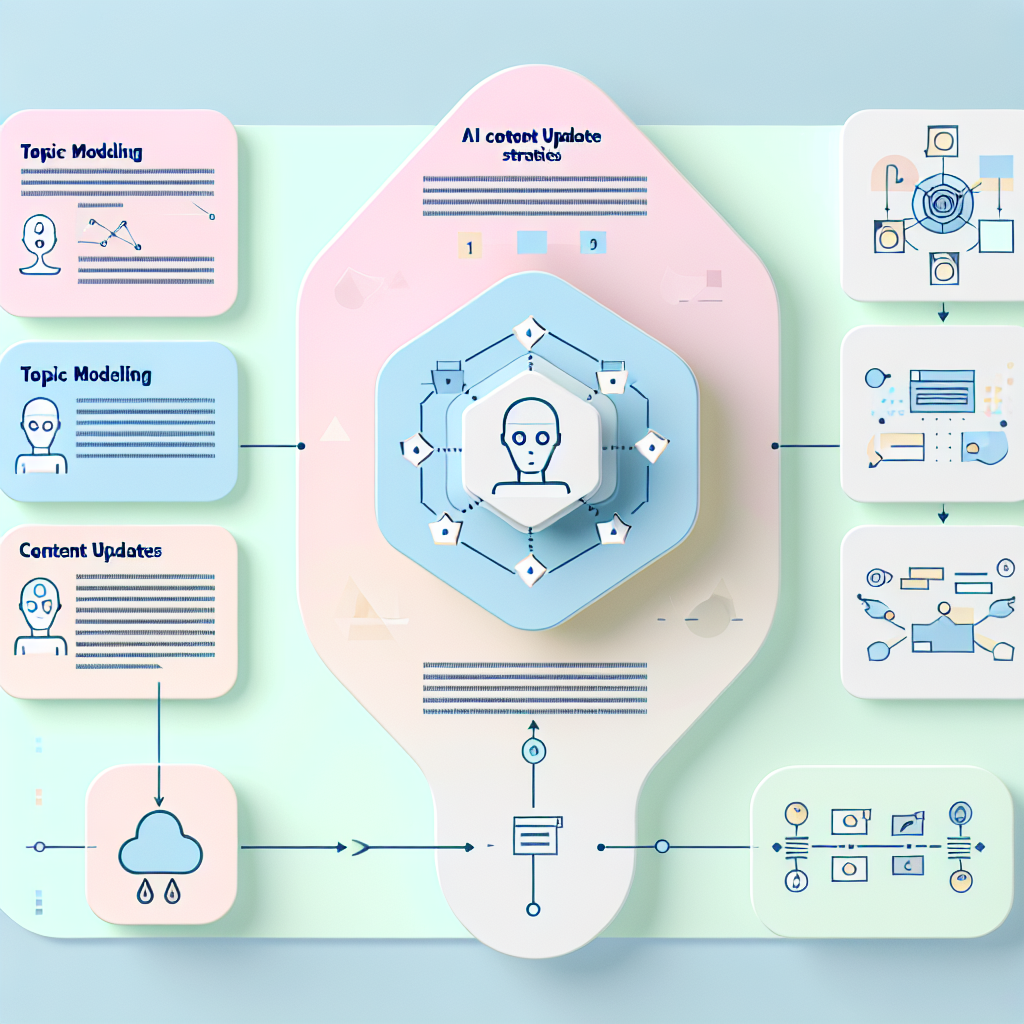Here is the blog post with the requested changes:
Why Google’s AI Overviews Could Redefine Organic Search for Enterprise SEO Teams
Introduction
The rapid evolution of Google Search is forging a new frontier in digital marketing and enterprise SEO strategy. At the heart of this transformation lies Google’s AI Overviews, formerly known as Search Generative Experience (SGE)—a feature that utilizes advanced generative AI to synthesize information from across the web and serve concise, human-like answers directly in search results.
For enterprise SEO professionals and c-suite marketing executives, this innovation signals a profound shift in how users interact with search engines, how content is discovered, and ultimately, how digital growth targets are met.
Google’s AI Overviews tap into generative AI models like MUM (Multitask Unified Model) and Gemini (its family of large language models), presenting search summaries that compile data from multiple web pages into a single, digestible response. Currently available in multiple regions under Google’s Search Labs initiative and rolling out further in 2024, this technology aims to enhance user experience by minimizing the reliance on multiple search queries and reducing the need to click through traditional organic listings.
From a user standpoint, it means answers are faster and easier. For digital marketers and SEO teams, however, it introduces unprecedented challenges—and opportunities—in visibility, brand positioning, and traffic acquisition.
Historically, enterprise brands focused heavily on controlling SERPs (Search Engine Results Pages) through technical SEO, backlink acquisition, and content optimization. However, the emergence of AI Overviews compels a pivotal reevaluation.
If Google’s AI summarizes information without necessarily attributing every data source visibly, it could diminish CTR (click-through rate) on page-one listings—even for top-ranking content. Marketers must learn how AI determines source quality, credibility, and trustworthiness.
Beyond rankings, the emphasis has shifted toward “being helpful,” a term Google often uses to describe its Helpful Content System update, now entwined with AI-led surfacing of information.
As AI Overviews evolve, enterprise SEO teams must align strategy with semantics, context, and true topical authority to remain visible. This evolution isn’t just another algorithm update—it’s an ecosystem-wide transformation. Understanding its features, risks, and integration into Google’s product pipeline is essential for senior marketing leaders and SEO heads to adapt wisely and maintain competitive edge.
What Are AI Overviews? The Search Experience Reimagined
Google’s AI Overviews represent a technological convergence between sophisticated AI and behavioral search insights. Understanding how these features interact with enterprise SEO performance requires examining their underlying mechanisms, empirical observations, and academic support.
At its core, AI Overviews are powered by Google’s Gemini model, designed to process multimodal inputs and contextual relationships across languages and content formats. A study published in *Nature Machine Intelligence* by Bubeck et al. (2023) explored how generative language models like GPT-4 outperform traditional retrieval-based models in tasks requiring synthesis across multiple data points.
Google is leveraging similar generative fusion to provide single-snapshot overviews from diverse content sources, replacing the fragmented blue-link experience with a coherent AI-generated narrative.
Shift in User Behavior: The Decline of Traditional CTR
A critical concern for enterprise SEO teams is attribution and citation. In independent eye-tracking studies conducted by Nielsen Norman Group in Q4 of 2023, user focus drastically shifted from conventional link listings to AI answer boxes when they were present.
Engagement with traditional links dropped by up to 45% in some verticals, signaling a potentially significant impact on domains reliant on organic discovery. The risk for enterprise content teams is stark: if traffic declines as Google provides enough utility in its AI slate, audiences may never click through—even if your content contributed to the summary.
Is Google Giving Credit? The Debate on Attribution
Google has addressed concerns over attribution by stating that each AI Overview provides links to the underlying sources it pulled from. However, early user reports and A/B testing screenshots show mixed results—some AI-generated answers have clear citations, while others list revenue-driving queries with limited outbound links.
A joint report from SparkToro and Datos (2023) observed a surging percentage of what it calls “zero-click searches,” which hit 65% in mobile environments—AI Overviews could push this ratio even higher.
This underscores why enterprise marketers need to move beyond ranking and into relevance: building content so authoritative and trustworthy that AI models favor it as part of their answer sets.
Users Trust the AI—Even If They Shouldn’t Always
Meanwhile, a research paper from the University of Washington titled “When Search Becomes Answer” (2023) examined the interplay between user trust and AI-generated responses. The authors concluded that users perceived AI summaries as more trustworthy than traditional snippets, especially when presented cleanly with minimal conflicting information.
Such findings compel marketers to recalibrate content strategies toward authority-building, not just keyword targeting. At scale, this means reinforcing your brand as a domain expert—something only possible through precision content strategy, structured expertise, and editorial integrity.
Helpful Content and E-E-A-T: Now More Essential Than Ever
Additionally, Google’s Helpful Content System—codified in its Search Quality Evaluator Guidelines (SQEG)—plays a significant role in AI selection. Content that’s original, people-first, and demonstrates E-E-A-T (Experience, Expertise, Authoritativeness, Trustworthiness) is likelier to be cited or referenced by Google’s AI.
For enterprise teams, this means investing in subject-matter expertise, structured data markup, and purpose-driven topical silos—content strategies that reflect credibility at scale.
Google’s May 2024 blog post by Liz Reid, Head of Search, emphasized that AI Overviews aim to enrich traffic rather than suppress it. But the dynamics aren’t fully transparent, and marketers can’t guide how AI credits or showcases content in a closed-loop environment. Innovating areas like site structure, schema, tone, and content presentation will determine long-term visibility.
Conclusion: SEO’s New Imperative—Be the Brand the AI Trusts
Google’s AI Overviews demand a foundational shift in how enterprise SEO teams define visibility, value, and victory in organic search. While risks like reduced CTR and source attribution remain a concern, the opportunity lies in mastering the signals that feed Google’s AI.
For C-suite marketing executives and enterprise search strategists, the future of SEO is about far more than page-one rankings—it’s about becoming the source that AI trusts and promotes.
References
- Google Blog on AI Overviews
- Nielsen Norman Group Eye-Tracking Study
- SparkToro Zero-Click Search Study
- Bubeck et al., Sparks of Artificial General Intelligence, Nature Machine Intelligence (2023)
- “When Search Becomes Answer,” University of Washington (2023)
- Google’s Search Quality Evaluator Guidelines (SQEG)
**Concise Summary:**
Google’s AI Overviews, powered by advanced generative AI models, are revolutionizing the search experience by providing concise, human-like answers directly in search results. This shift poses both challenges and opportunities for enterprise SEO teams, who must adapt their strategies to focus on content authority, trustworthiness, and alignment with Google’s Helpful Content System.

Dominic E. is a passionate filmmaker navigating the exciting intersection of art and science. By day, he delves into the complexities of the human body as a full-time medical writer, meticulously translating intricate medical concepts into accessible and engaging narratives. By night, he explores the boundless realm of cinematic storytelling, crafting narratives that evoke emotion and challenge perspectives.
Film Student and Full-time Medical Writer for ContentVendor.com




